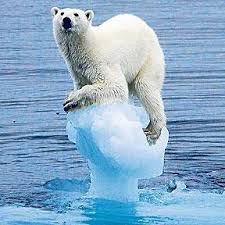
Education on climate change can make a big difference for the future of our planet. A comprehensive education will increase young people’s ability to address climate changes and can help reduce the negative effects of a changing environment.
Educators must have the right tools and resources to help them incorporate climate change into their classrooms. They need to know what the curriculum should contain, how it should teach, and how it should assess. There are many resources that educators can use. These include videos, games, and book recommendations.

Years of Living Dangerously consists of a series interrelated lessons that teach students about climate change's impact on the earth. The curriculum encourages students to analyze the relevance of climate change and consider solutions. This program is science-based and includes writing projects, hands-on activities, and service learning opportunities. The curriculum is customizable for educators.
The National Education Association acknowledges that climate change is caused primarily by human activity. This is a concern for both teachers and students. Columbia University's Center for Sustainable Development hosts a course where students are taught about the different factors that impact Earth's climate. Students are encouraged to join local coalitions and advocate for change during the course.
National Park Service's Climate Change Response Program has many educational videos. In the lesson "The Human Impacts of Climate Change", students will learn how climate change is affecting weather patterns and ecosystems. Videos are available in several languages for educators.
The Siemens Stiftung Media Portal includes a range of resources from video clips to interactive graphics. Teachers will find a wide range of resources here, including worksheets or an abbreviated IPCC report.

Teach Climate Justice campaigns aims to educate young people regarding the dangers posed by climate change. However, it addresses issues of race and economic inequality as well as militarism. The campaign's 18-year-old member, a climate campaigner, has been active in the movement since he was 13. He wants to make fundamental changes to the school's curriculum.
The shift in energy consumption is one of the most important behavioral changes that can occur. There is a wealth of scientific research that shows how to reduce our energy consumption and mitigate the negative impacts of a warming climate.
Zinn Education Project offers many other valuable resources. It also has a website that provides free climate change education resources. Teachers have access to videos, graphics, lessons, and can download a free copy the IPCC report.
Although teaching climate change is not without its difficulties, educators are making great strides. New Jersey is the first state to adopt standards to educate teachers on the subject. Since that year, several state-level learning requirements have been established. Some of these standards include social studies and languages around the world.
FAQ
What is the effect of land use changes and deforestation on climate?
The climate can be directly affected by deforestation and changes in land use. The trees that have been cut down or burned can no longer absorb carbon dioxide, one of Earth's most important greenhouse gases. The atmosphere is less carbon dioxide if trees are removed by deforestation, or burned for agriculture purposes.
Changes in land usage can also cause more greenhouse gasses to be released into the atmosphere. The use of fertilizer and pesticides can also increase the emissions of methane and nitrogen oxide when forests are replaced by agricultural lands. Also, clearing can increase soils containing large amounts of carbon; these soils may be exposed to farming activities that turn them over or disturb them, which will release more carbon dioxide in the atmosphere.
Deforestation, land-use change and other environmental impacts can cause more greenhouse gas emissions than they do. It can also affect regional air quality. The smoke from deforestation's burning events has been linked to poor visibility and other health concerns, such as asthma or other respiratory diseases. The global climate can change as a result of changes in local air quality. This is because more sunlight reaches the Earth's surface than the atmosphere.
In conclusion, both deforestation (and land-use) change have been a major contributor to rising levels of global greenhouse gases emissions. Additionally, they have had negative effects on local airquality that has contributed further to climate changes. If serious efforts towards mitigating climate changes are to be made quickly, then reducing these practices must be a priority.
What are some possible solutions to climate change, and how effective are these solutions?
Climate change is one of the most pressing issues of our times, requiring urgent attention from governments, businesses, and citizens alike. The signs of a disturbed climate system include rising temperatures, extreme weather and sea level rises, as well as melting polarice. Numerous solutions have been suggested to deal with this phenomenon. They include technological solutions as well as behavioral changes and geoengineering.
Technological Solutions: An array of solutions have arisen to address climate change through changes in technology. These include renewable energy sources, such as solar or wind power. They provide reliable and clean energy with minimal impact on the environment. Electric cars using renewable energy are a great alternative to petrol vehicles. They can reduce urban air pollution significantly. Other technological solutions include projects to increase carbon sequestration within trees and soil, as well coastal protection systems that protect vulnerable places from rising oceans.
Behavior Changes: Making small changes to your routines can make an enormous difference in reducing carbon emissions and limiting the likelihood of future climate disruption. By purchasing local goods, you can lower emissions related to transport costs and reduce transportation costs. The use of public or active transportation, as well as reducing cost and air polluting simultaneously, is a good option. In the same way, better insulation in your home can help reduce dependence on gas boilers that heat your homes.
Geo-engineering : Geo-engineering refers to large-scale interventions in natural system that have been deemed too risky for potential unforeseen results.
The effectiveness of these solutions largely depends on how much producers commit themselves towards investing in green alternatives; currently, initiatives such as using electric Cars tend expensive when compared with petrol versions however economic incentives favoring green investments play an integral role in incentivizing alternative solution uptake otherwise these remain mostly dormant when exposed only market forces which cannot guarantee their utility over time try apart from increasing consumer awareness over time regarding their efficiency hence mandating alternative solutions via policy measures represents one way forward however this needs regulatory bodies willing committed enough engaging players involved further still nontechnological approaches work one level but solving global warming phenomena requires all parties involved tackling issue earnest together.
What is the current status of the global climate, and how is it changing in the future?
The current global climate state is one of unprecedented change and uncertainty. Temperatures are rising rapidly due to unprecedented levels of atmospheric carbon dioxide. This is causing heat waves, droughts, changes in rainfall patterns, melting of polar ice caps and ocean acidification as well as an increase in sea level.
These changes are already having a profound affect on ecosystems worldwide, causing extinctions or disruptions of habitats. They are also threatening lives and livelihoods for billions of people, especially those who live in areas with resource scarcity.
Because of the increase in average surface temperatures from human activity, the number of extreme weather phenomena such as hurricanes and cyclones has been increasing steadily over time. This trend is expected to continue into the future as temperatures continue to climb.
Global climate change is causing many problems. These include rising food insecurity, displacement due to extreme weather events and sea level rise that force communities to move. Climate change is also causing social inequalities, bydisproportionately affecting marginalized groups that lack the knowledge or resources to adapt effectively.
While there has been progressing in efforts such as reducing carbon emissions or renewable energy initiatives in some countries, we have yet to see meaningful action at a global level that would be necessary for mitigating these changes effectively. To prevent further destruction and devastation caused by climate change, all countries must work together to take immediate action and plan for adaptation in an ever-changing world.
How are extreme weather events related to climate change?
Global warming has directly affected extreme weather phenomena such as heatwaves. Atmospheric temperatures have increased due to global warming which has affected different weather phenomena on a global scale.
According to climate scientists the average frequency for extreme weather-related events has increased more than twofold since 1980. As the ocean temperature rises, so does the frequency of extreme weather-related disasters. This can affect the distribution of hurricanes and storms in different geographic regions around the globe.
The 2015 El Nino event pushed warm water toward South America resulting in rising temperatures at an alarming rate along with heavy rains that triggered floods in Peru and Bolivia resulting in the displacement of people and property damage. Several places including Antarctica have recorded their highest-ever temperatures indicating a definite relation between global warming trends and the occurrence or frequency of extreme weather events around the world.
Another example is Hurricane Irma which took place in 2017 causing $50 billion of economic loss not just to the USA's Florida but also to other states such as Puerto Rico, Cuba, etc proving once again that climate change is responsible for a dramatic increase in major storms.
The Intergovernmental Panel on Climate Change's (IPCC) concluded, "Human activities are increasing the severity current climate change." This naturally leads worldwide to more severe, intense, and frequent natural disasters. There is strong evidence of humans' involvement with extreme weather events occurring frequently around us all.
What does the role of greenhouse gases contribute to climate change?
Greenhouse gasses are key to climate change. They act as an invisible blanket that wraps around the Earth, trapping heat radiation and warming it. Without them, the planet might be much colder that it is now.
Greenhouse gases are generated through human activity, such as burning fossil fuels or other industries that produce emissions. These activities increase the heat that is trapped in the atmosphere. This leads to higher temperatures and more extreme weather events.
The most abundant greenhouse gas is carbon dioxide (CO2), which is released when burning fossil fuels such as coal, oil, and gas. Methane (CH4), nitrous oxide (N2O), and fluorinated gases (F-gases) are also major contributors to climate change.
Human activities have caused a significant increase in greenhouse gas concentrations since preindustrial times. This has led both to global warming and an increase worldwide in temperatures, as well as increased ocean levels. It is also leading to changes such as intense storms and droughts; melting glaciers; and rising seas.
To avoid more damage from climate changes, humans must reduce their emissions by switching away from fossil energy to increase their use of renewable energy like solar and wind power. Reforestation and other agricultural practices can be used to absorb more CO2 from air. These actions will help reduce atmospheric concentrations in greenhouse gases and create a healthier ecosystem for all life.
What are the main causes of climate changes?
Climate change is a global phenomenon. It has been caused by an increase in greenhouse gases that are emitted from humans. These emissions result in trapping more of the sun's heat in Earth's atmosphere, resulting in rising global temperatures.
Other contributing factors to climate change are population growth, land clearance and destruction of ecosystems as well as deforestation, energy use, over-grazing and energy consumption. This further decreases the number natural carbon sinks that absorb CO2 in the atmosphere. Climate change can also come from natural forces, such as changes in solar energy.
This combination of human activities results in Earth exceeding its ability to balance its energy budget. The result is an average global increase of 1° Celsius since pre-industrial days. As the oceans absorb most heat energy, glaciers melt more quickly than they form. Other adverse consequences include water shortages and droughts as well as extreme weather events, such as flooding and hurricanes, which are often caused by heavy rains on soils.
We must reduce our carbon footprint, and begin reducing our emissions immediately to protect ourselves from the increasing impacts of climate change. Along with reducing our dependence upon fossil fuels to generate electricity, it is important to invest in renewable sources like wind turbines or solar cells that do not emit harmful pollutants into nature. Other sustainable practices like reforestation can also help restore some balance around these delicate planetary cycles we rely on for survival.
What is the effect of climate change upon biodiversity and ecosystems?
Climate change can have a variety of impacts on biodiversity, ecosystems, and the environment. Today's issues that impact wildlife and ecosystems include rising temperatures, increased sea levels and extreme weather events.
Changes to climate conditions can have drastic consequences for biodiversity and the functioning ecosystems. Changes in the hydrological cycle can also affect water availability for aquatic species.
Climate change can also lead to rising temperatures and more extremes, such as droughts or floods. This places more strain on already fragile systems like coral reefs, tropical rainforests, and other ecosystems. The climate change will lead to the extermination or decline of as many as 30% of animal species in 2050. This could cause further destruction of ecological communities.
Climate change is a serious threat to biodiversity as well as human societies that rely on functioning ecosystems for food and fresh water. The best way to minimize its impact is to work at every level to reduce global warming trends. Future damages can be avoided with prudent management practices.
Statistics
- The 100 least-emitting countries generate 3 per cent of total emissions. (un.org)
- The 10 countries with the largest emissions contribute 68 percent. (un.org)
- This source accounts for about 10% of all the water that enters this highly productive farmland, including rivers and rain. (climate.nasa.gov)
- Fossil fuel production must decline by roughly 6 percent per year between 2020 and 2030. (un.org)
- Indigenous peoples and local communities receive less than 1% of all climate funding despite scoring wins for people and nature Africa's broken food markets must be fixed to tackle hunger (climatechangenews.com)
External Links
How To
How to Support Climate-Friendly Policies and Companies
There are many ways that individuals can support climate-friendly companies and policies. This can include speaking out against non-climate-friendly businesses or politicians, voting for pro-environment candidates, writing letters or emails of encouragement to those who are already taking positive action towards the environment, and signing petitions in favor of policies that encourage and support climate-friendliness. Individuals can take practical steps like switching to greener providers or choosing more sustainable products than those that emit higher carbon emissions.
A key step to supporting climate-friendly policies is reducing one's carbon footprint. This can involve changing simple daily habits such as unplugging appliances or switching off lights when not needed, commuting via public transportation or carpooling instead of driving alone, using eco-friendly household items like biodegradable cleaning supplies and composting kitchen scraps rather than adding them to landfills, wearing clothes made from sustainable fibers often grown without chemicals, choosing locally sourced food whenever possible, setting up energy-efficient energy systems at home using solar panels or wind turbines, and planting trees around your property which absorb CO2 (carbon dioxide) from the atmosphere.
Investors interested in supporting climate friendly policies should research companies with lower carbon emissions before investing. Investors who are interested in supporting climate friendly policies should research companies that emit less carbon than they own. They should also review their portfolios frequently to make sure they comply with the sustainability standards set by them. Green bond investors should ensure that the funds they invest in do not finance any activities that release more greenhouse gases into our atmosphere than they take away. Lastly, investors should pay attention to any opportunities where funds could be transitioned towards green business activities such as renewable energy alternatives as well as other initiatives promoting sustainability such as community-building projects focused on green technologies.